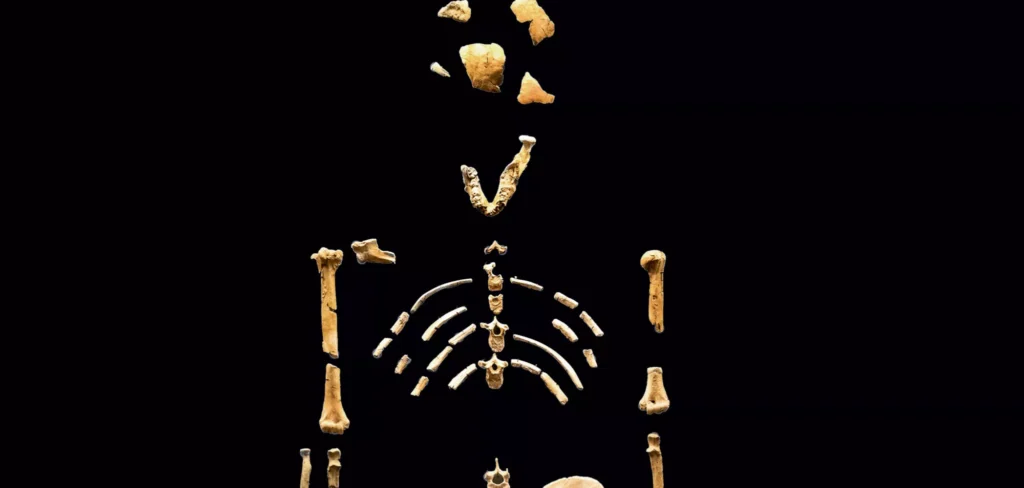Lesson: The proof of evolution and human lineage
Evolution and speciation are closely related concepts in biology, but they refer to different aspects of biological change over time.
Evolution is the change over time in one or more inherited traits found in populations of organisms. Inherited traits are particular distinguishing characteristics, including anatomical, biochemical or behavioral characteristics that result from gene–environment interactions. Evolution may occur when there is variation of inherited traits within a population. The major sources of such variation are mutation and genetic recombination. This process has produced all the diversity of living organisms. Charles Darwin characterized the result as endless forms most beautiful and most wonderful.
Two processes are generally distinguished as common causes of evolution. One is natural selection, a process in which there is differential survival and/or reproduction of organisms that differ in one or more inherited traits. Another cause is genetic drift, a process in which there are random changes to the proportions of two or more inherited traits within a population.
In speciation, a single ancestral species splits into two or more different species. Speciation is visible in anatomical, genetic and other similarities between groups of organisms, geographical distribution of related species, the fossil record and the recorded genetic changes in living organisms over many generations. Speciation stretches back over 3.5 billion years during which life has existed on earth. It is thought to occur in multiple ways such as slowly, steadily and gradually over time or rapidly from one long static state to another.

• Evolution = Gradual genetic change in a population over time.
• Speciation = The process of forming new species through evolutionary changes.
I- Phylogenetics
In biology, phylogenetics is the study of evolutionary relatedness among groups of organisms (e.g. species, populations), which is discovered through molecular sequencing data and morphological data matrices.
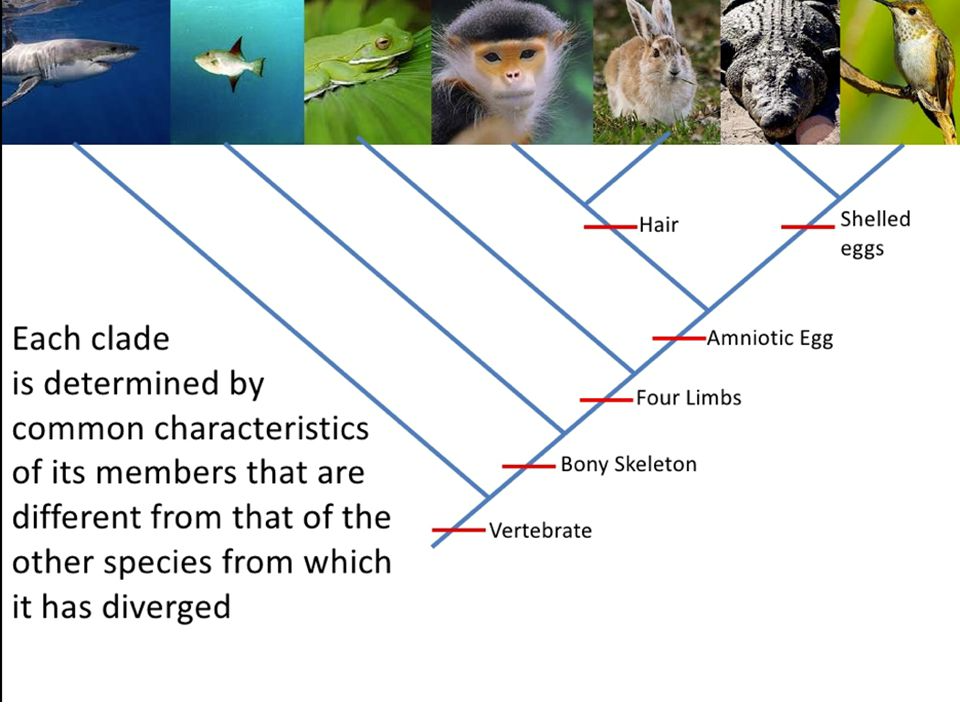
Taxonomy, the classification, identification, and naming of organisms, is richly informed by phylogenetics. One methodology, cladism (also cladistics) shared derived characters used to create ancestor-descendant trees (cladograms) and delimit taxa (clades). In biological systematics as a whole, phylogenetic analyses have become essential in researching the evolutionary tree of life.
II- Species
A species is the basic unit of biological classification and refers to a group of organisms that share common characteristics and can interbreed to produce fertile offspring (Biological Species Concept). But, this concept doesn’t apply to asexual organisms (e.g., bacteria) or extinct species…
In biology, a species is one of the basic units of biological classification and a taxonomic rank. A species is often defined as a group of organisms capable of interbreeding and producing fertile offspring.
In phylogenetic, a species is the smallest group of organisms that share a common ancestor, based on genetic similarities.
Charles Darwin proposed the theory of universal common descent through an evolutionary process in On the Origin of Species, saying, « There is a grandeur in this view of life, with its several powers, having been originally breathed into a few forms or into one ».
The last universal ancestor (or last universal common ancestor, LUCA), that is, the most recent common ancestor of all currently living organisms, is believed to have appeared about 3.9 billion years ago.
III- Human Lineage
Human evolution, or anthropogeny, is the origin and evolution of Homo sapiens as a distinct species from other hominids, great apes and placental mammals. The study of human evolution uses many scientific disciplines, including physical anthropology, primatology, archaeology, linguistics and genetics.
he term « human » in the context of human evolution refers to the genus Homo, but studies of human evolution usually include other hominids from which the genus Homo had diverged by about 2.3 to 2.4 million years ago in Africa. Scientists have estimated that humans branched off from their common ancestor with chimpanzees about 5–7 million years ago. Several species and subspecies of Homo evolved and are now extinct. These include Homo erectus, which inhabited Asia, and Homo sapiens neanderthalensis, which inhabited Europe. Archaic Homo sapiens evolved between 400,000 and 250,000 years ago.
The dominant view among scientists concerning the origin of anatomically modern humans is the « Out of Africa » or recent African origin hypothesis, which argues that Homo sapiens arose in Africa and migrated out of the continent around 50,000 to 100,000 years ago, replacing populations of Homo erectus in Asia and Homo neanderthalensis in Europe. Scientists supporting the alternative multiregional hypothesis argue that Homo sapiens evolved as geographically separate but interbreeding populations stemming from a worldwide migration of Homo erectus out of Africa nearly 2.5 million years ago. This theory has been contradicted by recent evidence.
Hominization, or The History of the Human Lineage
By Using : http://humanorigins.si.edu/evidence/human-evolution-timeline-interactive, work to understand what is written just below about the human lineage
Chimpanzees are the primates that most closely resemble human beings genetically. Though we are not descended from chimpanzees, we do share with them a common ancestor who lived 8 to 10 million years ago.
The series of transformations that primates have undergone since then to produce the human beings of today are known as hominization. In this process of hominization, a number of different species have been born and died out. Paleoanthropologists use the term “hominids” to designate all these past and present human species.
The dawn of humanity began in Africa between 6 and 4.5 million years ago. The primates of that time who are our ancestors may have used very primitive tools, but the fossil record shows very few traces of human intelligence.
Between 4 and 2 million years ago, another hominid genus, Australopithecus, lived in Africa. Members of this genus walked on two feet, had larger brains than monkeys of the same size, and ate mainly plants. In 1974, a complete skeleton of an adult female Australopithecus was discovered in Ethiopia. This famous specimen has been nicknamed “Lucy”.
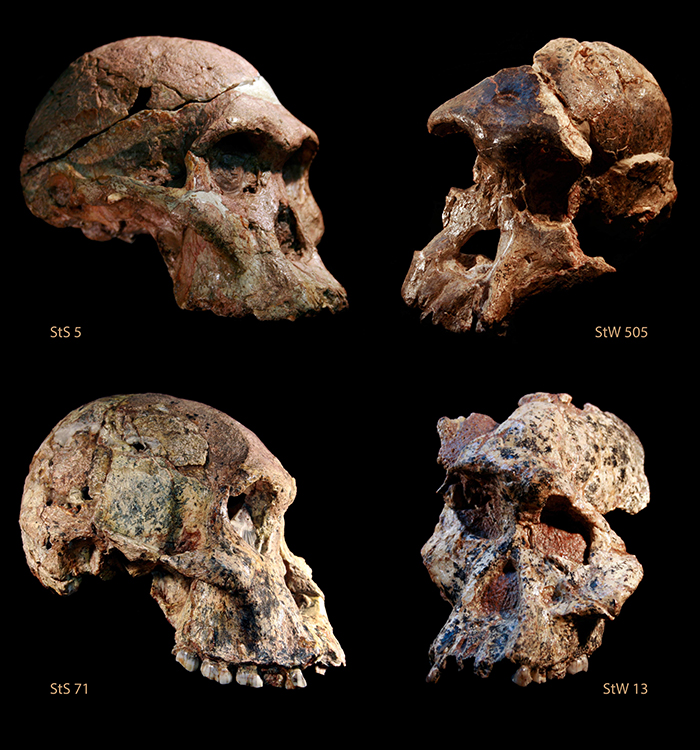
Around 2 million years ago, the line of the genus Homo made its official appearance with the species Homo habilis. This species manufactured various crude tools that it used for purposes such as butchering the animals that it ate to supplement its plant diet.
Homo erectus supplanted Homo habilis starting about 1.8 million years ago and lived until about 200 000 years ago. Homo erectus had an even larger brain. This species hunted large herds of animals, had mastered fire, manufactured axes, and spread from Africa to the tropical and temperate zones of Eurasia.
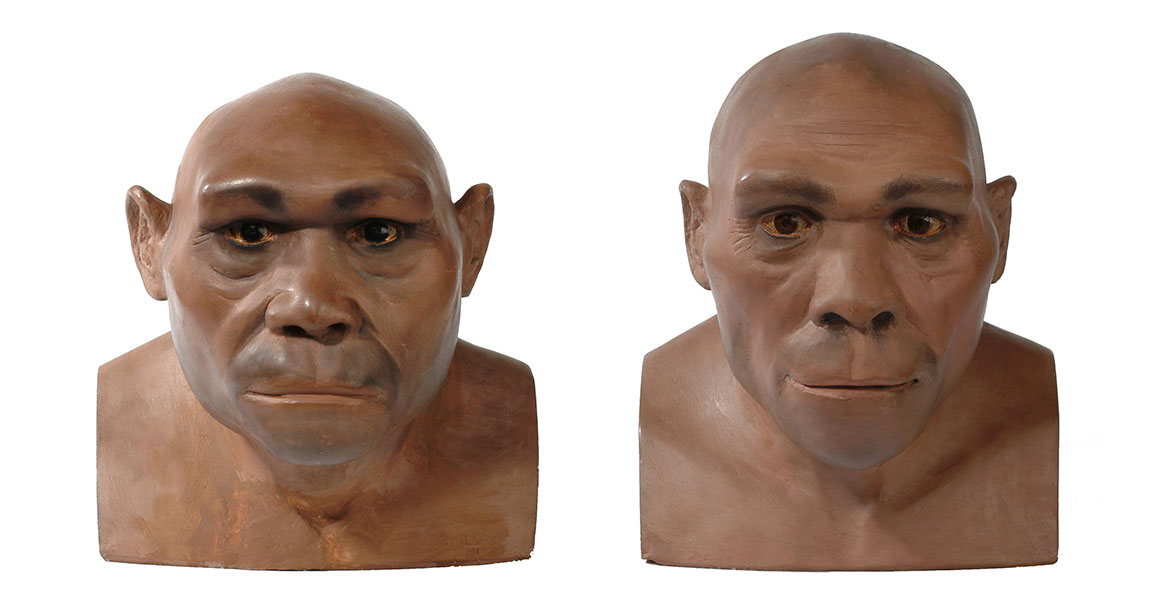
https://www.nhm.ac.uk/discover/homo-erectus-our-ancient-ancestor.html
About 500 000 years ago, the earliest forms of our own species, Homo sapiens, first appeared. About 250 000 years ago, a new variety, Homo sapiens neanderthalensis, emerged. These early humans possessed more sophisticated tools, made of stone and possibly of wood. There is little evidence of Neanderthal art, science or religion, but the Neanderthals are believed to have buried their dead (the oldest mortuary site dates back about 100 000 years). Neanderthals were very strong physically, and they were also excellent hunters. They died out scarcely 30 000 years ago.
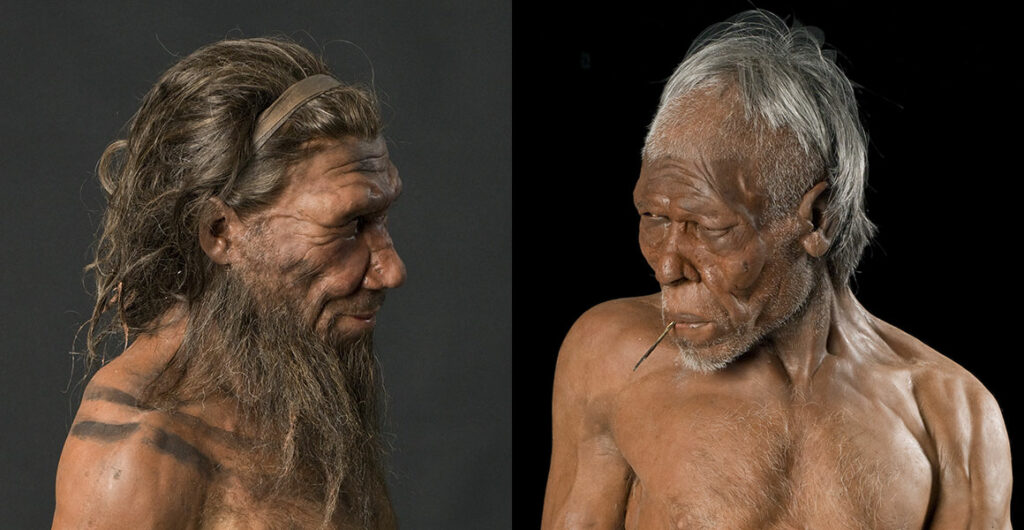
The Neanderthals’ disappearance was no doubt somehow related to the spread of the next variety of their species, Homo sapiens sapiens (that is, us). Homo sapiens sapiens first appeared about 100 000 years ago, and remains of Cro-Magnon man, the European representative of this group, have been found that date back 35 000 years. With Homo sapiens sapiens, we see the emergence of specifically human activities, such as art and religion. These early humans left behind magnificent cave paintings, the oldest of which, in the Chauvet Cave in France, date back more than 32 000 years.
Over a few tens of thousands of years, Homo sapiens sapiens conquered every climate region of the Earth. Starting about 10 000 years ago, agriculture, the domestication of animals, cities, and writing soon followed.
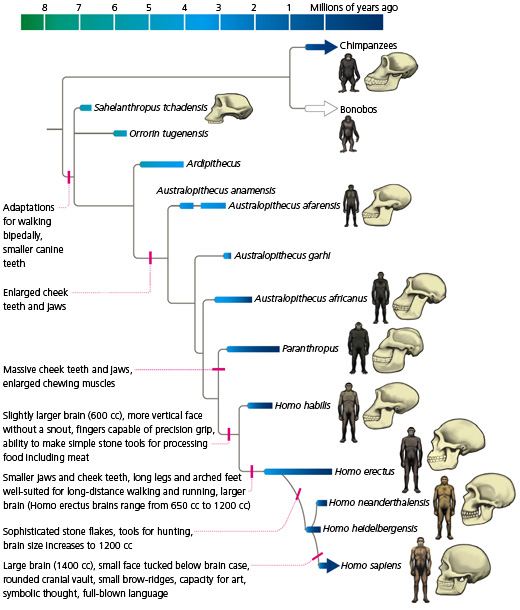
Vocabulary :
Adaptation – modification of an organism or its parts that makes it more fit for existence under the conditions of its environment
Artificial selection – a deliberate form of selection used in breeding plants and animals; human selection of genetic traits as opposed to natural selection of genetic traits
Cladogram – an evolutionary family tree; a way of visually presenting relationships between organisms
Coevolution – a form of evolution involving successive changes in two or more ecologically interdependent species (like a plant and its pollinators) that affect their interactions
Common Ancestor – When a new species branches off from an older one, after the DNA change
Convergent Evolution – the evolution of similar characteristics in unrelated species due to similar environmental stresses; example: thorns on a rose and spines on a cactus
Darwinism – a theory of evolution by natural selection put forward by Charles Darwin
Evidence for Evolution – Fossil records, comparison of skeletal structure, DNA and embryos
Evolution – a theory that explains the origin and development of species on earth; the process of speciation; a gradual change in a group of living things
Extinction – the permanent disappearance of a species (When environmental pressures cause a species to die out completely)
Fossil – the remains of a living thing that have been preserved over time
Gene – a basic unit of heredity in a living thing that carries the instructions needed to make a particular protein, which build and control all cells in the body
Gene pool – all the genes in a breeding population
Genetic Variation – genetic diversity in a population; natural differences between living things
Genotype – the genetic makeup of a cell or living thing
Hybrid – the offspring of parents from two different species. Example: a horse and a donkey make a mule. Hybrids are common in the plant kingdom and uncommon in the animal kingdom
Mimic – a living thing that imitates another. Example: some flies have evolved to look like bees, with yellow and black stripes
Missing link – a missing page in the evolutionary fossil record; the lack of a transitional form between two organisms
Mutation – a change in a cell’s genetic material
Natural Selection – a “weeding out” process that favors the fittest and best-adapted form of an organism
Phenotype – the visible characteristics produced by a genotype. Example: blue eyes, brown hair etc
Polymorphic – when members of the same species have several different genotypes; example: humans have several different blood types
Speciation – the development of a new species from an existing species
Sexual Selection – a “weeding out” process that favors the most sexually attractive and virile individuals in a population. What is considered sexually attractive is subject to opposite sex preference
Struggle to Survive – Environmental pressures keep some organisms from surviving long enough to reproduce. Limited resources can be environmental pressures (not enough food, water, or space). Only the offspring with the best traits for survival will live to reproduce.
Transitional Form – a species that links two groups of living things; a life form that falls between two other life forms in the evolutionary fossil record

